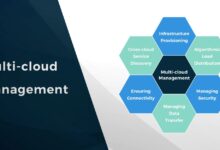Cloud Analytics Platform: 7 Powerful Benefits You Can’t Ignore
In today’s data-driven world, a cloud analytics platform is no longer a luxury—it’s a necessity. From startups to Fortune 500s, businesses are leveraging the cloud to unlock insights, scale faster, and outpace competitors. Let’s dive into what makes these platforms so transformative.
What Is a Cloud Analytics Platform?
/cdn.vox-cdn.com/uploads/chorus_image/image/63710251/20150428-cloud-computing.0.1489222360.0.jpg?w=1200)
A cloud analytics platform is a suite of tools and services hosted in the cloud that enables organizations to collect, process, analyze, and visualize data. Unlike traditional on-premise systems, these platforms offer flexibility, scalability, and real-time access from anywhere in the world. They are built to handle massive volumes of structured and unstructured data, making them ideal for modern analytics needs.
Core Components of a Cloud Analytics Platform
Understanding the architecture of a cloud analytics platform helps demystify how it delivers value. These platforms are not monolithic; they consist of interconnected components that work in harmony.
Data Ingestion Tools: These tools pull data from various sources—databases, IoT devices, CRM systems, and more—into the cloud.Examples include AWS Kinesis, Google Cloud Pub/Sub, and Azure Event Hubs.Data Storage Solutions: Once ingested, data is stored in scalable cloud data warehouses like Snowflake, Google BigQuery, or Amazon Redshift.These systems support petabyte-scale storage and fast query performance..
Processing Engines: Platforms use distributed computing frameworks like Apache Spark or Google Dataflow to process data efficiently, whether in batch or real time.Analytics and Visualization Layers: Tools like Tableau, Power BI, or Looker connect to the processed data to generate dashboards, reports, and interactive visualizations.How It Differs From On-Premise Analytics
Traditional analytics systems require significant hardware investment, dedicated IT staff, and long deployment cycles.In contrast, a cloud analytics platform operates on a pay-as-you-go model, reducing upfront costs and enabling rapid deployment..
According to a Gartner report, over 75% of organizations will shift to cloud-based data and analytics solutions by 2025. This shift is driven by the agility and cost-efficiency that only the cloud can provide.
“The cloud is not just a place to store data—it’s a platform for innovation.” — Satya Nadella, CEO of Microsoft
Top 7 Benefits of Using a Cloud Analytics Platform
Adopting a cloud analytics platform brings transformative advantages. Below are seven powerful benefits that explain why businesses are making the switch.
1. Scalability and Elasticity
One of the most compelling features of a cloud analytics platform is its ability to scale on demand. Whether you’re processing terabytes of daily user activity or running complex machine learning models, the cloud adjusts resources automatically.
cloud analytics platform – Cloud analytics platform menjadi aspek penting yang dibahas di sini.
- You can scale up during peak periods (e.g., holiday sales) and scale down during lulls, optimizing costs.
- Platforms like Amazon Redshift offer auto-scaling clusters that respond to workload changes in real time.
- Elasticity ensures that performance remains consistent, even as data volumes grow exponentially.
2. Cost Efficiency
Cloud analytics eliminates the need for expensive hardware, data centers, and maintenance teams. Instead, you pay only for the storage and compute you use.
- No capital expenditure (CapEx) is required—only operational expenditure (OpEx).
- Cloud providers offer tiered pricing, reserved instances, and spot instances to further reduce costs.
- For example, Google BigQuery charges based on the amount of data processed per query, not on cluster size or uptime.
3. Faster Time to Insight
With pre-built connectors, automated pipelines, and intuitive dashboards, cloud analytics platforms drastically reduce the time it takes to go from raw data to actionable insights.
- Data engineers can set up ETL (Extract, Transform, Load) pipelines in hours, not weeks.
- Business analysts can access self-service tools to explore data without waiting for IT.
- Real-time analytics capabilities allow immediate responses to market changes.
4. Enhanced Collaboration
Because cloud analytics platforms are accessible from anywhere, teams across departments and geographies can collaborate seamlessly.
- Marketing, finance, and operations can all access the same data sets, ensuring alignment.
- Version control and shared workspaces prevent data silos and conflicting reports.
- Tools like Tableau Online allow users to comment on dashboards, share insights, and co-edit reports in real time.
5. Advanced Analytics and AI Integration
Modern cloud analytics platforms come with built-in machine learning and AI capabilities, enabling predictive and prescriptive analytics.
- AWS SageMaker, Azure Machine Learning, and Google Vertex AI allow users to build, train, and deploy models directly within the analytics environment.
- Automated anomaly detection can flag unusual patterns in sales, traffic, or system performance.
- Natural language processing (NLP) enables users to ask questions like “Show me last quarter’s revenue by region” using plain English.
6. High Availability and Reliability
Cloud providers offer service level agreements (SLAs) guaranteeing 99.9% or higher uptime. This reliability is critical for mission-critical analytics workloads.
- Data is automatically replicated across multiple availability zones to prevent loss.
- Disaster recovery and backup solutions are built-in, reducing downtime risk.
- For example, Snowflake offers continuous data protection with zero RPO (Recovery Point Objective) and near-zero RTO (Recovery Time Objective).
7. Security and Compliance
Contrary to early concerns, cloud analytics platforms often provide better security than on-premise systems.
- Providers invest heavily in encryption (in transit and at rest), identity management, and threat detection.
- Platforms comply with global standards like GDPR, HIPAA, SOC 2, and ISO 27001.
- Role-based access control (RBAC) ensures that only authorized users can view or modify sensitive data.
Leading Cloud Analytics Platforms in 2024
The market for cloud analytics is crowded, but a few platforms stand out due to their capabilities, ecosystem, and user adoption.
Amazon Web Services (AWS) Analytics Suite
AWS offers a comprehensive set of analytics tools, including Amazon Redshift, QuickSight, Kinesis, and Glue.
cloud analytics platform – Cloud analytics platform menjadi aspek penting yang dibahas di sini.
- Redshift is a fully managed data warehouse that supports petabyte-scale data analysis.
- QuickSight provides AI-powered insights and natural language queries.
- Glue automates ETL processes with serverless architecture.
AWS is ideal for enterprises already invested in the Amazon ecosystem. Learn more at aws.amazon.com/analytics.
Google Cloud Platform (GCP) Analytics
GCP’s analytics stack includes BigQuery, Dataflow, Looker, and Dataproc.
- BigQuery is a serverless, highly scalable data warehouse that enables real-time analytics using SQL.
- Looker, now part of Google Cloud, offers robust data modeling and embedded analytics.
- Dataflow provides stream and batch processing using Apache Beam.
GCP excels in machine learning integration and real-time analytics. Visit cloud.google.com/analytics for details.
Microsoft Azure Synapse Analytics
Azure Synapse combines data integration, enterprise data warehousing, and big data analytics in one service.
- It integrates seamlessly with Power BI for visualization and Azure Machine Learning for AI.
- Supports both SQL and Spark engines, enabling hybrid workloads.
- Offers dedicated SQL pools for high-performance queries and serverless options for cost control.
Azure is a top choice for organizations using Microsoft 365 and Dynamics 365. Explore at azure.microsoft.com/synapse-analytics.
Snowflake: The Cloud-Native Data Platform
Snowflake is not tied to a specific cloud provider—it runs on AWS, Azure, and GCP, offering true multi-cloud flexibility.
- Its unique architecture separates compute and storage, allowing independent scaling.
- Supports data sharing across organizations without copying or moving data.
- Offers a marketplace for third-party data and applications.
Snowflake is favored by data-driven companies for its simplicity and performance. Learn more at snowflake.com.
How to Choose the Right Cloud Analytics Platform
Selecting the best platform depends on your organization’s size, goals, technical maturity, and existing infrastructure.
cloud analytics platform – Cloud analytics platform menjadi aspek penting yang dibahas di sini.
Assess Your Data Needs and Workloads
Start by understanding the volume, velocity, and variety of your data.
- Are you processing real-time streaming data or batch historical data?
- Do you need support for structured, semi-structured (JSON, XML), or unstructured data (images, logs)?
- What are your latency requirements? Sub-second responses may require in-memory processing.
For example, if you’re running a real-time fraud detection system, a platform like Google BigQuery with streaming inserts may be ideal.
Evaluate Integration Capabilities
The platform should integrate smoothly with your existing tools—CRM, ERP, data lakes, and BI software.
- Check for pre-built connectors to Salesforce, SAP, Oracle, or Shopify.
- Ensure compatibility with your preferred programming languages (Python, SQL, R).
- Look for APIs that allow custom integrations and automation.
For instance, Power BI integrates natively with Azure and Microsoft 365, making it a natural fit for enterprises using those tools.
Consider Total Cost of Ownership (TCO)
While cloud platforms reduce upfront costs, long-term expenses can add up if not managed properly.
- Factor in compute, storage, data transfer, and egress fees.
- Monitor query optimization—inefficient queries can lead to high costs in platforms like BigQuery.
- Use cost management tools like AWS Cost Explorer or Azure Cost Management to track spending.
A 2023 IDC study found that companies using cost optimization strategies saved up to 40% on their cloud analytics bills.
Security, Governance, and Compliance
Data governance is non-negotiable, especially in regulated industries like healthcare and finance.
- Ensure the platform supports data lineage, auditing, and masking.
- Verify compliance with regional regulations (e.g., GDPR in Europe, CCPA in California).
- Implement strong identity and access management (IAM) policies.
For example, Snowflake’s data governance features include dynamic data masking and secure data sharing with expiration policies.
cloud analytics platform – Cloud analytics platform menjadi aspek penting yang dibahas di sini.
Implementation Best Practices for Cloud Analytics Platforms
Deploying a cloud analytics platform successfully requires more than just technical setup—it demands strategic planning and change management.
Start with a Clear Data Strategy
Define your key business questions and KPIs before building pipelines.
- What decisions will this data inform?
- Who are the primary users—executives, analysts, or data scientists?
- Establish data ownership and stewardship roles.
A well-defined strategy prevents “data for data’s sake” and ensures alignment with business goals.
Adopt a Phased Rollout Approach
Instead of a big-bang migration, start with a pilot project.
- Choose a high-impact, manageable use case—like customer churn analysis or supply chain optimization.
- Use the pilot to test performance, usability, and ROI.
- Scale to other departments based on lessons learned.
This reduces risk and builds internal buy-in.
Invest in Data Literacy and Training
Even the best platform fails if users don’t know how to use it.
- Provide training for analysts, business users, and IT staff.
- Encourage a data-driven culture through workshops and incentives.
- Use in-platform tutorials and documentation (e.g., Looker’s learning paths).
According to a McKinsey report, companies with strong data literacy are 3x more likely to achieve financial targets.
Monitor Performance and Optimize Continuously
Cloud analytics is not “set and forget.” Regular monitoring ensures efficiency and cost control.
cloud analytics platform – Cloud analytics platform menjadi aspek penting yang dibahas di sini.
- Track query performance, data freshness, and user adoption.
- Optimize data models and indexing to reduce latency.
- Use automated alerts for anomalies or cost overruns.
Tools like Datadog or New Relic can integrate with cloud platforms for end-to-end observability.
Real-World Use Cases of Cloud Analytics Platforms
The true power of a cloud analytics platform shines in real-world applications. Here are three compelling examples.
Retail: Personalizing Customer Experiences
A global retailer uses AWS analytics to analyze customer behavior across online and in-store channels.
- Combines transaction data, website clicks, and loyalty program activity in Amazon Redshift.
- Uses machine learning to recommend products in real time via mobile app.
- Results: 25% increase in conversion rates and 15% higher average order value.
This level of personalization would be impossible without a scalable cloud analytics platform.
Healthcare: Improving Patient Outcomes
A hospital network leverages Google Cloud’s BigQuery and Looker to analyze electronic health records (EHR).
- Identifies patients at risk of readmission using predictive models.
- Tracks treatment effectiveness across departments.
- Ensures HIPAA compliance with encrypted data and access controls.
The platform enables faster decision-making and reduces patient complications by 20%.
Manufacturing: Predictive Maintenance
An industrial manufacturer uses Azure Synapse and IoT Hub to monitor equipment health.
- Sensors collect vibration, temperature, and pressure data from machines.
- Streaming analytics detect anomalies before failures occur.
- Reduces unplanned downtime by 30% and maintenance costs by 25%.
This proactive approach saves millions annually and improves operational efficiency.
cloud analytics platform – Cloud analytics platform menjadi aspek penting yang dibahas di sini.
Future Trends in Cloud Analytics Platforms
The landscape of cloud analytics is evolving rapidly. Here are key trends shaping the future.
AI-Driven Analytics Automation
Platforms are incorporating AI to automate data preparation, insight discovery, and report generation.
- Tools like ThoughtSpot and Power BI’s “Quick Insights” use natural language to surface hidden patterns.
- AutoML features allow non-experts to build predictive models.
- AI-powered data catalogs automatically classify and tag data assets.
This democratizes analytics, making it accessible to more users.
Edge Analytics Integration
As IoT devices proliferate, analytics is moving closer to the data source—on the edge.
- Cloud platforms now support edge-to-cloud data pipelines (e.g., AWS IoT Analytics).
- Real-time processing at the edge reduces latency and bandwidth usage.
- Critical for applications like autonomous vehicles and smart cities.
The fusion of edge and cloud analytics enables faster, smarter decisions.
Multi-Cloud and Hybrid Analytics
Organizations are avoiding vendor lock-in by adopting multi-cloud strategies.
- Snowflake and Databricks support deployment across AWS, Azure, and GCP.
- Hybrid models allow sensitive data to stay on-premise while leveraging cloud scalability.
- Interoperability standards like Open Data Initiative (ODI) promote data portability.
This flexibility ensures resilience and strategic freedom.
Augmented Data Management
Future platforms will use AI to manage data quality, metadata, and governance automatically.
cloud analytics platform – Cloud analytics platform menjadi aspek penting yang dibahas di sini.
- Self-healing data pipelines detect and correct errors.
- Intelligent data catalogs recommend relevant datasets based on user behavior.
- Dynamic masking adapts to user roles and context.
This reduces manual overhead and improves trust in data.
Common Challenges and How to Overcome Them
Despite their advantages, cloud analytics platforms come with challenges.
Data Silos and Integration Complexity
Many organizations struggle with fragmented data across systems.
- Solution: Implement a data lake or data warehouse as a central hub.
- Use ETL/ELT tools to unify data from disparate sources.
- Adopt a data mesh architecture for decentralized ownership.
Security and Privacy Risks
Storing sensitive data in the cloud raises concerns about breaches and compliance.
- Solution: Encrypt all data, enforce MFA, and conduct regular audits.
- Use zero-trust security models and data loss prevention (DLP) tools.
- Train employees on data handling best practices.
Cost Management and Optimization
Uncontrolled usage can lead to “bill shock.”
- Solution: Set budget alerts and usage quotas.
- Optimize queries and use columnar storage formats like Parquet.
- Leverage reserved instances for predictable workloads.
Skills Gap and Talent Shortage
Finding skilled data engineers and analysts remains a challenge.
- Solution: Invest in upskilling programs and partner with managed service providers.
- Use low-code/no-code tools to empower citizen data analysts.
- Adopt platforms with strong documentation and community support.
What is a cloud analytics platform?
A cloud analytics platform is a cloud-based service that enables organizations to store, process, analyze, and visualize data. It eliminates the need for on-premise infrastructure and offers scalability, cost-efficiency, and real-time insights.
cloud analytics platform – Cloud analytics platform menjadi aspek penting yang dibahas di sini.
What are the top cloud analytics platforms?
The leading platforms include Amazon Web Services (AWS) Analytics, Google Cloud Platform (GCP) Analytics, Microsoft Azure Synapse, and Snowflake. Each offers unique strengths in scalability, AI integration, and multi-cloud support.
Is cloud analytics secure?
Yes, cloud analytics platforms often provide stronger security than on-premise systems, with encryption, identity management, and compliance certifications. However, organizations must configure security settings properly and follow best practices.
How much does a cloud analytics platform cost?
Costs vary based on usage, but most platforms follow a pay-as-you-go model. Factors include data storage, compute time, data transfer, and additional services like machine learning. Proper optimization can reduce costs significantly.
Can small businesses use cloud analytics platforms?
Absolutely. Cloud analytics platforms are scalable and cost-effective, making them accessible to small and medium-sized businesses. Many offer free tiers or starter plans to help organizations get started.
cloud analytics platform – Cloud analytics platform menjadi aspek penting yang dibahas di sini.
Cloud analytics platforms are revolutionizing how businesses harness data. From scalability and cost savings to AI-powered insights and global collaboration, these platforms offer unparalleled advantages. While challenges like security and cost management exist, they can be overcome with proper planning and best practices. As technology evolves, the integration of AI, edge computing, and multi-cloud strategies will further enhance the power of cloud analytics. For any organization looking to stay competitive, adopting a cloud analytics platform isn’t just smart—it’s essential.
Recommended for you 👇
Further Reading:









